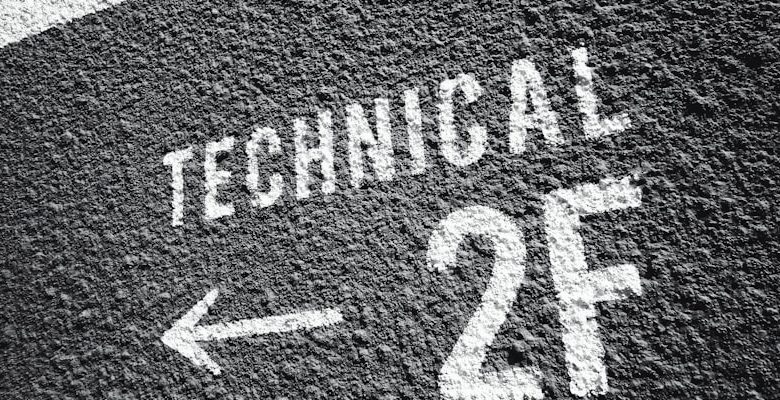How to Use Technical Analysis for Smarter Crypto Investments

- Understanding the Basics of Technical Analysis in Crypto Trading
- Key Tools and Indicators for Analyzing Cryptocurrency Price Charts
- Identifying Trends and Patterns to Make Informed Investment Decisions
- Utilizing Support and Resistance Levels for Better Entry and Exit Points
- Applying Technical Analysis Strategies to Different Cryptocurrencies
- Avoiding Common Mistakes When Using Technical Analysis for Crypto Investments
Understanding the Basics of Technical Analysis in Crypto Trading
When it comes to investing in cryptocurrencies, technical analysis is a crucial tool that can help investors make smarter decisions. Technical analysis involves studying past market data, primarily price and volume, to predict future price movements. By understanding the basics of technical analysis, crypto traders can gain valuable insights into market trends and potential opportunities for profitable investments.
One key concept in technical analysis is the use of charts to visualize price movements over time. These charts can help traders identify patterns, trends, and support/resistance levels that can be used to make informed trading decisions. Common types of charts used in technical analysis include line charts, bar charts, and candlestick charts.
Another important aspect of technical analysis is the use of technical indicators. These indicators are mathematical calculations based on historical price and volume data, which can help traders confirm trends, identify potential entry and exit points, and gauge the strength of market movements. Popular technical indicators in crypto trading include moving averages, Relative Strength Index (RSI), and Bollinger Bands.
Key Tools and Indicators for Analyzing Cryptocurrency Price Charts
When analyzing cryptocurrency price charts, there are several key tools and indicators that can help you make smarter investment decisions. These tools provide valuable insights into market trends and potential price movements, allowing you to time your trades more effectively. Here are some of the most important tools and indicators to consider:
1. Moving Averages: Moving averages smooth out price data to create a clearer picture of the overall trend. The most commonly used moving averages are the simple moving average (SMA) and the exponential moving average (EMA). By analyzing the relationship between short-term and long-term moving averages, you can identify potential entry and exit points.
2. Relative Strength Index (RSI): The RSI is a momentum oscillator that measures the speed and change of price movements. It ranges from 0 to 100 and is typically used to identify overbought or oversold conditions. A high RSI value indicates that a cryptocurrency may be overbought, while a low RSI value suggests it may be oversold.
3. Bollinger Bands: Bollinger Bands consist of a simple moving average and two standard deviations plotted above and below the average. These bands expand and contract based on market volatility, providing insights into potential price breakouts or breakdowns. When a cryptocurrency price reaches the upper band, it may be overbought, while reaching the lower band could indicate oversold conditions.
4. Volume: Volume is a measure of the number of cryptocurrency units traded over a specific period. High volume typically accompanies strong price movements, indicating increased interest and participation in the market. Analyzing volume alongside price movements can confirm the strength of a trend or signal potential reversals.
5. Support and Resistance Levels: Support and resistance levels are price levels where a cryptocurrency tends to find barriers to further movement. Support levels act as a floor for prices, while resistance levels act as a ceiling. By identifying these levels on a price chart, you can anticipate where price may stall or reverse direction.
By incorporating these tools and indicators into your technical analysis, you can gain a deeper understanding of cryptocurrency price movements and make more informed investment decisions. Remember to use these tools in conjunction with other forms of analysis and risk management strategies to maximize your chances of success in the volatile cryptocurrency market.
Identifying Trends and Patterns to Make Informed Investment Decisions
Identifying trends and patterns is crucial when it comes to making informed investment decisions in the world of cryptocurrency. By utilizing technical analysis, investors can analyze historical price data to identify trends and patterns that may indicate potential future price movements.
One of the key aspects of technical analysis is the use of charts to visually represent price data. By looking at these charts, investors can identify trends such as uptrends, downtrends, and sideways trends. Additionally, patterns such as head and shoulders, triangles, and flags can also provide valuable insights into potential future price movements.
By identifying these trends and patterns, investors can make more informed decisions about when to buy, sell, or hold a particular cryptocurrency. This can help investors maximize profits and minimize losses, ultimately leading to a more successful investment strategy.
Utilizing Support and Resistance Levels for Better Entry and Exit Points
Utilizing support and resistance levels can be a valuable tool for making informed decisions when investing in cryptocurrencies. These levels are key price points where a cryptocurrency has historically had difficulty moving beyond (resistance) or staying below (support). By identifying these levels, investors can better predict potential price movements and make smarter entry and exit points.
When a cryptocurrency’s price approaches a support level, it is often seen as a good opportunity to buy because historically, the price has bounced back up from that point. On the other hand, when the price nears a resistance level, it may be a sign to sell as the price has struggled to break through that point in the past. By paying attention to these levels, investors can make more strategic decisions about when to enter or exit a trade.
In addition to identifying support and resistance levels, it is crucial to consider other technical indicators to confirm potential price movements. For example, looking at moving averages, volume trends, and chart patterns can provide further insight into whether a cryptocurrency is likely to continue its current trend or reverse direction.
Overall, incorporating support and resistance levels into your technical analysis can help you make more informed decisions when investing in cryptocurrencies. By combining these levels with other technical indicators, you can gain a more comprehensive understanding of the market and improve your chances of success.
Applying Technical Analysis Strategies to Different Cryptocurrencies
When applying technical analysis strategies to different cryptocurrencies, it is important to consider the unique characteristics of each digital asset. While the basic principles of technical analysis remain the same across all markets, the specific nuances of the cryptocurrency market can impact the effectiveness of certain strategies. Here are some key considerations to keep in mind when using technical analysis for crypto investments:
- Volatility: Cryptocurrencies are known for their high volatility, which can make price movements more erratic and unpredictable. This can impact the accuracy of technical analysis indicators, so it is important to use a combination of tools and signals to confirm your analysis.
- Liquidity: Liquidity is another important factor to consider when analyzing cryptocurrencies. Less liquid assets may experience larger price swings, making it harder to accurately predict future price movements. Be sure to take liquidity into account when applying technical analysis strategies.
- Market Sentiment: The cryptocurrency market is heavily influenced by market sentiment and news events. This can cause sudden price fluctuations that may not be reflected in technical analysis indicators. It is important to stay informed about market sentiment and news developments when using technical analysis for crypto investments.
- Correlations: Some cryptocurrencies may have correlations with other assets, such as Bitcoin or Ethereum. These correlations can impact the effectiveness of technical analysis strategies, so be sure to consider the broader market context when analyzing individual cryptocurrencies.
By taking these factors into account and adapting your technical analysis strategies to the unique characteristics of different cryptocurrencies, you can make smarter investment decisions in the fast-paced and dynamic cryptocurrency market.
Avoiding Common Mistakes When Using Technical Analysis for Crypto Investments
When using technical analysis for crypto investments, it’s important to avoid common mistakes that can negatively impact your decisions. Here are some key pitfalls to watch out for:
- Overreliance on a single indicator, such as moving averages or RSI, can lead to skewed analysis and poor investment choices. It’s essential to use a combination of indicators for a more holistic view.
- Ignoring the broader market trends and focusing solely on individual cryptocurrencies can result in missed opportunities or increased risk. Always consider the overall market context.
- Being influenced by emotions, such as fear of missing out or panic selling, can cloud your judgment and lead to impulsive decisions. Stay disciplined and stick to your analysis.
- Not setting clear entry and exit points based on your technical analysis can result in missed profits or unnecessary losses. Establishing a solid trading plan is crucial for success.
By avoiding these common mistakes and staying diligent in your technical analysis, you can make smarter crypto investments that are based on sound reasoning and analysis rather than emotions or hasty decisions.



